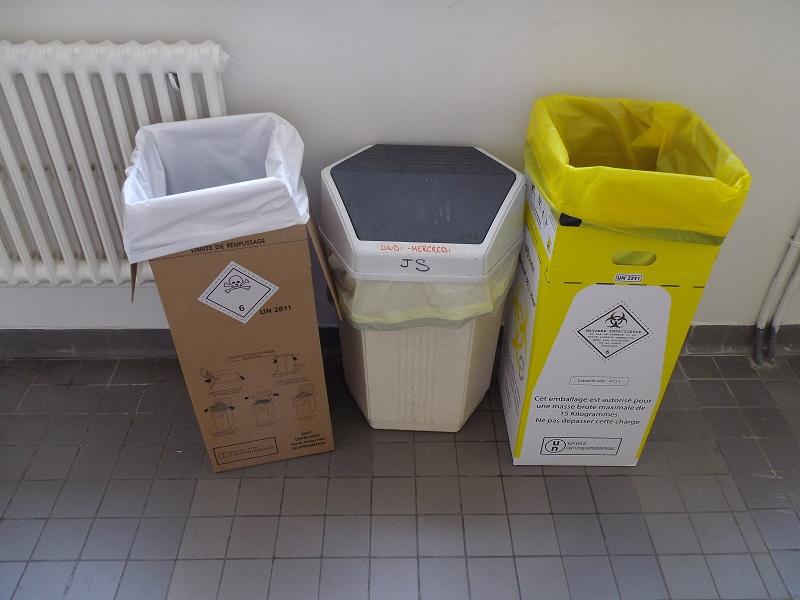Safety
Safety is really important for research. In this page, we tell you all about the safety aspects of our project: the safety in the lab, the safety integrated in our project design and the safety of the shipment.
Safe lab work
Concerning the safety in the lab, we all had a lecture by Chantal SOSCIA, the safety officer, about the risks and precautions. This lecture was prior to starting the wet lab. She told us about basic lab rules (for instance, washing hands before and after an experiment) and basic precautions for our safety: wearing a cotton lab coat, gloves, glasses (if needed), long pants, closed shoes, to have long hair tied. Then she told us about biological and chemical risks, to be aware of the risks before starting an experiment to take the right precautions, how to store the different products. She taught us the risks associated with several things we would use (like liquid nitrogen, sonicator, etc.) and what precautions to take in each case. We also learnt the disposal procedures for chemical and biological wastes. After the training session she gave us a booklet summarizing everything she told us.
In case of emergency, we had a trained responder in the lab next door. He showed us the location of fire extinguishers and the defibrillator.
The experiments on Pseudomonas aeruginosa where carried out by Gauthier DANGLA-PELISSIER, a PhD student, in a level 2 biosafety lab, respecting the rules fit for this kind of lab.
We were particularly careful when using toxic chemical compound:
- GelRed for agarose gel revelation: we were wearing a glove on the hand touching the contaminated objects (spatula, gel, revealing box) ;
- Chloroform: handled under the fume hood ;
- Crystal violet (or gentian violet): it was Gauthier who used it, wearing gloves and a lab coat;
- SDS (sodium dodecyl sulfate): wearing gloves.
Safe project design
The avantage of PLPs is their non-replicative nature. These particules mimic the organization of native phages, but do not contain genetic information for there own replication. Thus, PLPs can not persist in the environment and are designed to be specific only to their target. This approach does not pollute the environment.
Concerning the protein DEPS, after its production the enzyme is purified with a HisTag, that allows us to collect the exact protein, ensuring no contaminations.
Finally, the fatty acid is used in studied concentration, low enough to avoid any negative effect in the plant, except for targeted bacteria.



